Air Pollution and the Urban Heat Island Effect, Climate Change Issues We Can’t Always ‘CEE’
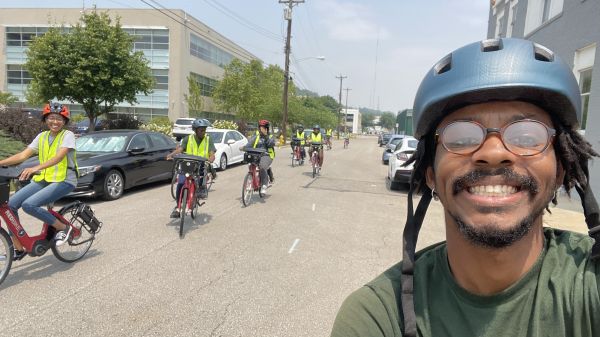
Each month, NAAEE shares narratives from the CEE-Change Fellows as they implement their community action projects and work to strengthen environmental education and civic engagement capabilities, all supporting the mission of cleaner air, land, and water. Join us on their journey! The Civics and Environmental Education (CEE) Change Fellowship is NAAEE’s newest initiative to support leadership and innovation in civics and environmental education in North America. This ee360+ program is a partnership between NAAEE, U.S. EPA, and the Cedar Tree Foundation.
Reflecting
When I reflect on what Civics and Environmental Education (CEE) mean to me, I think about my love for the outdoors and how nature always calms me. I remember being in middle or high school and how people would always ask me what I wanted to be when I grew up. That’s a loaded question for a kid. I knew that I loved art and science so I thought maybe I’d be an artist or study diseases. It wasn’t until my junior year of high school that I knew what I wanted to do. I was placed in an environmental science class that I didn’t sign up for. I immediately went to my counselor’s office to change classes, but then I decided I’d give it a shot and stick with the class. That was probably one of the best decisions I’ve ever made. Prior to that class, I never knew that you could have a career that allowed you to be outside and in nature. From that moment on, I’ve not only had the chance to work in nature, but also share my passions with my friends, family, and community.
Impact of the CEE-Change Fellowship
When I found out that I was selected for the CEE-Change Fellowship, I was both nervous and excited. It was so cool to hear about everyone’s Community Action Projects (CAPs) and how different the ideas were. Attending the Leadership Institute with the other fellows really gave me a sense of belonging. The work that we are all doing, engaging our communities in civic and climate action, is so important and sometimes it can be overwhelming. Having the time to network, form relationships, and troubleshoot my project was an invaluable experience. I realized that this work is bigger than all of us and we are stronger together. I am honored to be a 2023 CEE-Change Fellow and to have had the opportunity to see all of the amazing projects unfold. I couldn’t have done this without the support of NAAEE and the fellowship sponsors. Your support helped me to implement a project that I hope continues to grow in my city.
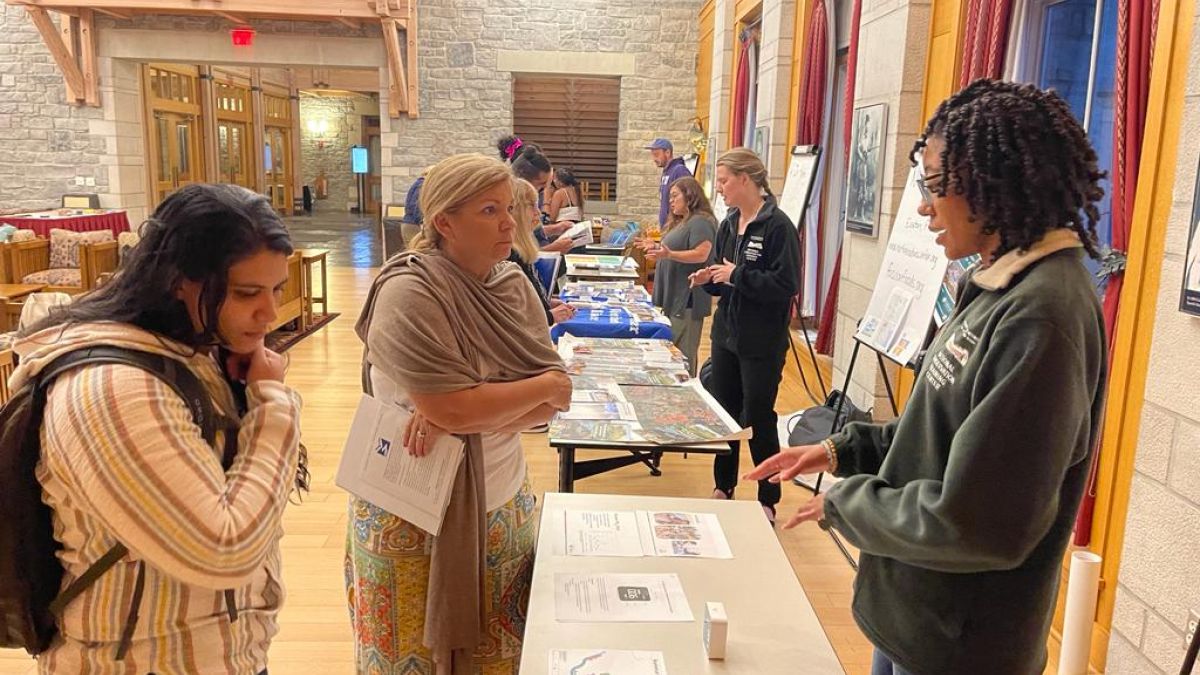
Jaeydah presenting her Community Action Project idea at the Leadership Institute Share Fair. Photo Credit: NAAEE
Clearing the Air on Climate Change in Cincinnati, Ohio
As our global climate continues to change, Cincinnati is no stranger to the effects of this warming. In the city of Cincinnati alone, we have begun to experience about 30 days a year where the heat index is over 90 degrees Fahrenheit, which can lead to more heat-related illnesses such as heat exhaustion or even heat stroke. Warmer temperatures in the region also allow for insects that thrive in warm weather, such as mosquitoes, to expand into our area. These insects have the ability to carry diseases that can be transmitted to humans such as the West Nile virus. We will also see more frequent storms, such as severe rain events, which can cause sewer overflows due to our city's old infrastructure and lead to infrastructure collapse when the soil is weakened by excess water. These hotter days can also lead to what is called the urban heat island effect. The urban heat island effect occurs primarily in areas with lots of pavement and buildings. The materials used to create concrete and bricks are impervious, meaning they don’t allow water through them. When it rains in an area with a lot of impervious surfaces, the water is not able to sink back into the ground. These surfaces also trap heat, making it feel hotter in these places. If there aren’t many trees and greenspaces to provide shade and cool an area off, it can experience this effect. We won’t be able to see the heat being trapped, but it can feel up to 20℉ hotter than an area with more trees.
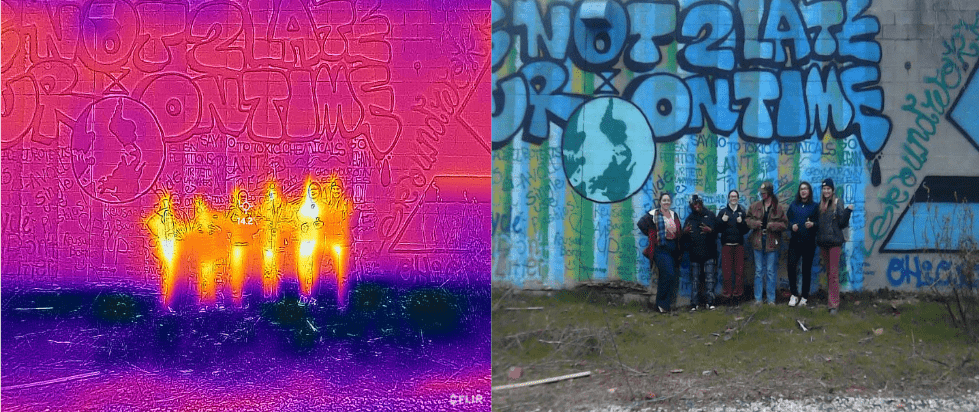
A thermal picture of the Lower Price Hill Green Team after taking thermal readings. Photo Credit: Jaeydah Edwards
In addition, hotter days can increase the amount of particulate matter in the air, causing poor air quality days. Particulate matter can be defined as a mixture of small particles and liquid droplets in our air. Particulate matter is so small that it is invisible to the naked eye. We can’t always see or smell air pollution, making it even more dangerous than we might realize. Frequent exposure to poor air quality can have both long and short-term effects on the body. Some of the health effects of exposure include eye, nose, and throat irritation, respiratory issues, asthma, lung cancer, heart attacks, and even premature death. The goal of my project was to teach residents about the causes and effects of climate change, as well as what they can do as individuals to fight this issue that is bigger than all of us.
For my CAP, I worked with both youth and adult residents in Cincinnati to discuss climate change within the city, specifically air quality issues and the urban heat island effect. The adult residents attended an air pollution hazard training that discussed climate change and air quality issues as a whole, and zeroed in on those issues in Cincinnati and how they connect to health and wellbeing. Following the air pollution hazard training, each resident took home both an indoor and an outdoor air quality monitor to check the air quality in their homes and communities. In 2022, Cincinnati was ranked 12th by the American Lung Association for the worst particle air pollution in the U.S. When I shared this fact with the residents, they were in shock. The biggest question I would get is, “what can we do about it?” The quality of our air is not something many of us frequently think about, and there are small steps we can take to fight this vast challenge.
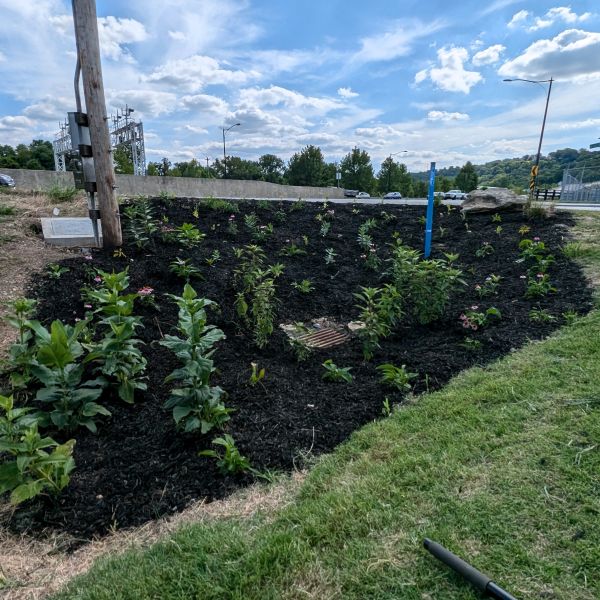
A rain garden planted by residents participating in Groundwork's air quality program. Photo Credit: Daniel Hill
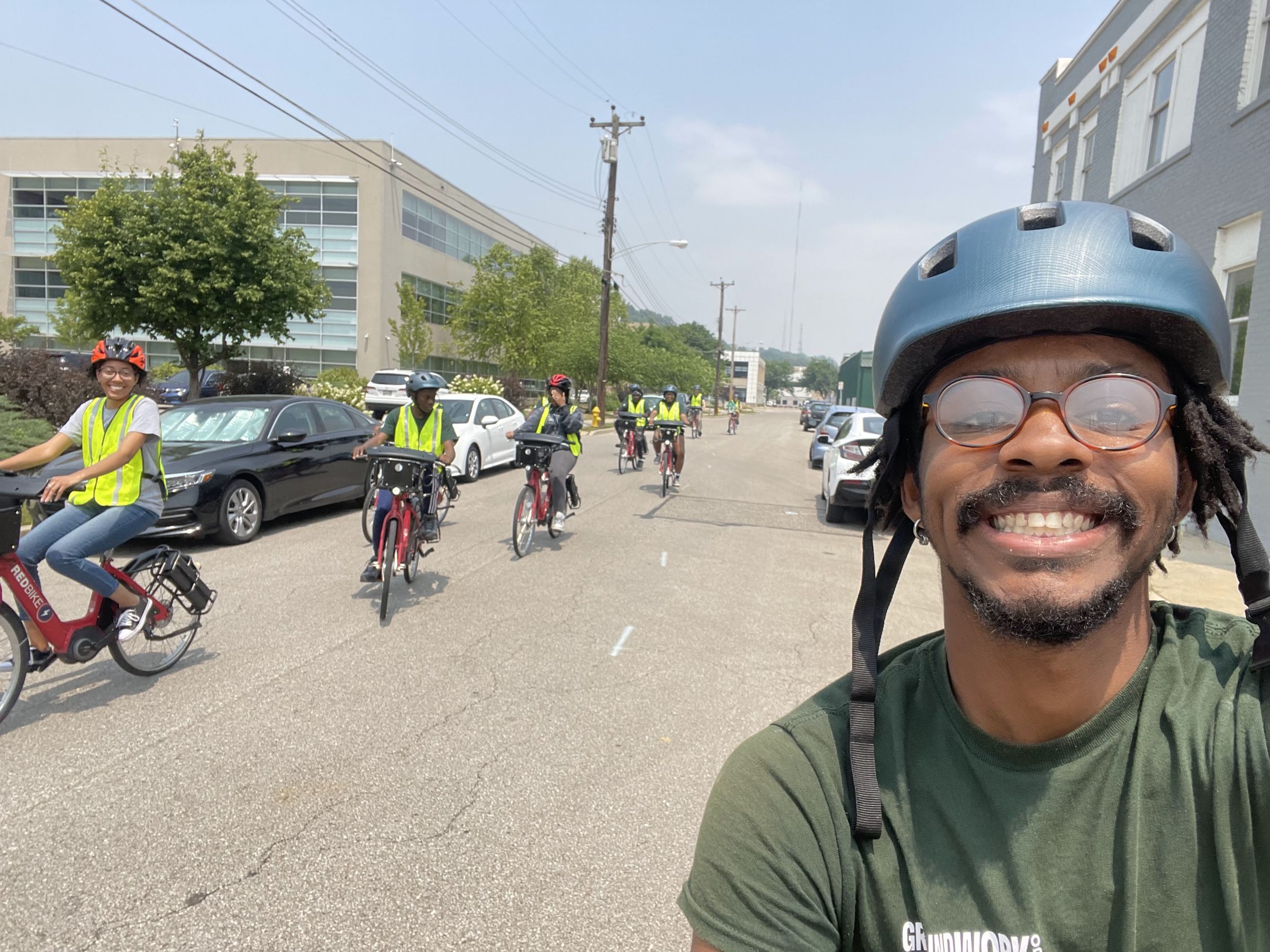
Groundwork Ohio River Valley youth going on a bike ride to sample air quality. Photo Credit: Anthony Buie
One of those steps is more plants! Following their first week of air quality monitoring, I hosted a plant swap where the residents were able to take home three air purifying plants. They were tasked with putting the plants in the same room as their indoor monitor. The goal of this was to see if their indoor air quality improved after introducing the air purifying plants. One resident shared, "The air quality study was impactful for me in understanding how my neighborhood affects my air quality. Anytime I think of air quality being bad, I never think of plants being a solution. However, after this study I learned the importance of plants for human health. I now will invest in getting air quality plants such as snake plants. Since I know they will help with my air quality."
With the youth residents, I met with them for one of their spring Green Team (Groundwork Ohio River Valley's Youth Green Workforce Program) work days. I surveyed the group on their understanding of the urban heat island effect, followed by an in-depth discussion. We then went outside with two thermal cameras and took pictures of various things, from pools of water to trees to crosswalk lines. For each picture, I had the youth explain to me the thermal readings in their photograph. For example, we talked about why a tree would be cooler compared to a building. One of my favorite pictures to discuss was why the white crosswalk lines were cooler than the rest of the concrete. It is so rewarding to spark a connection with the youth on phenomena they have all experienced, but never had a name for. No matter what field they go into after working with Groundwork’s Green Team Program, their generation and their voices have the ability to spark a change in this battle we are all fighting against climate change.

CEE-Change Fellows taking a selfie during the leadership retreat. Photo Credit: Jaeydah Edwards
The CEE-Change Fellowship has supported me to grow my leadership in civics and environmental education through workshops, networking, feedback, and so much more. I want to use what I have learned to continue to inspire and uplift both Cincinnati residents and beyond.



